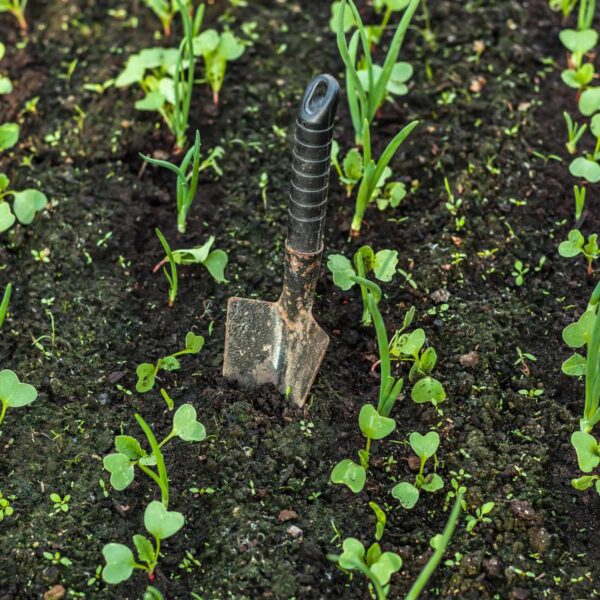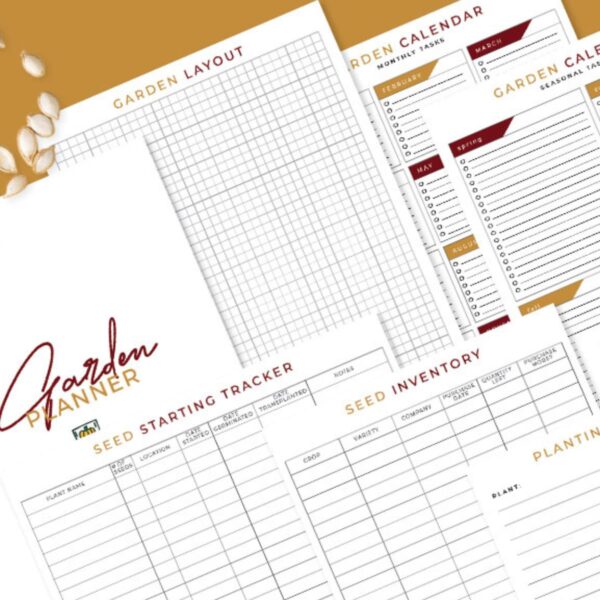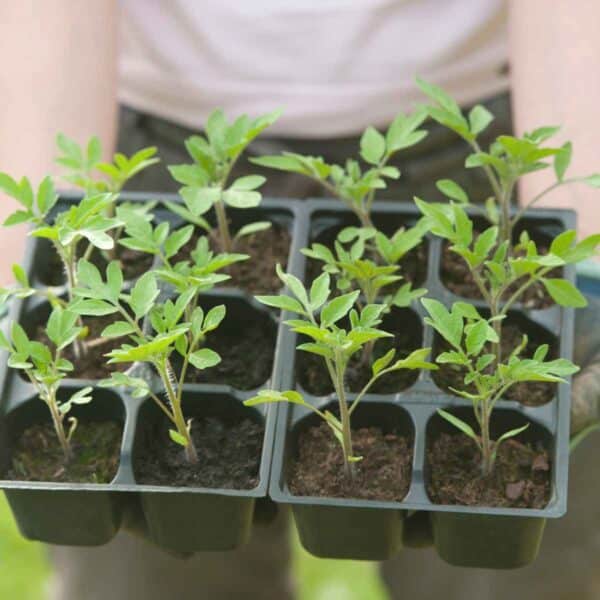Grow Beautiful Flowering Sun-Tolerant Hostas with these Tips
on Apr 07, 2024
This post may contain affiliate links. Please read our disclosure policy.
Did you know you can grow beautiful flowering sun-tolerant hostas? They are stunning additions to your landscape! Use these tips to care for sun loving hostas.
Don’t worry if you don’t have a shady spot in your garden. There are several hosta species that tolerate sun. In fact, they will thrive – not just tolerate. Sun-loving hostas add color and texture to your garden beds.
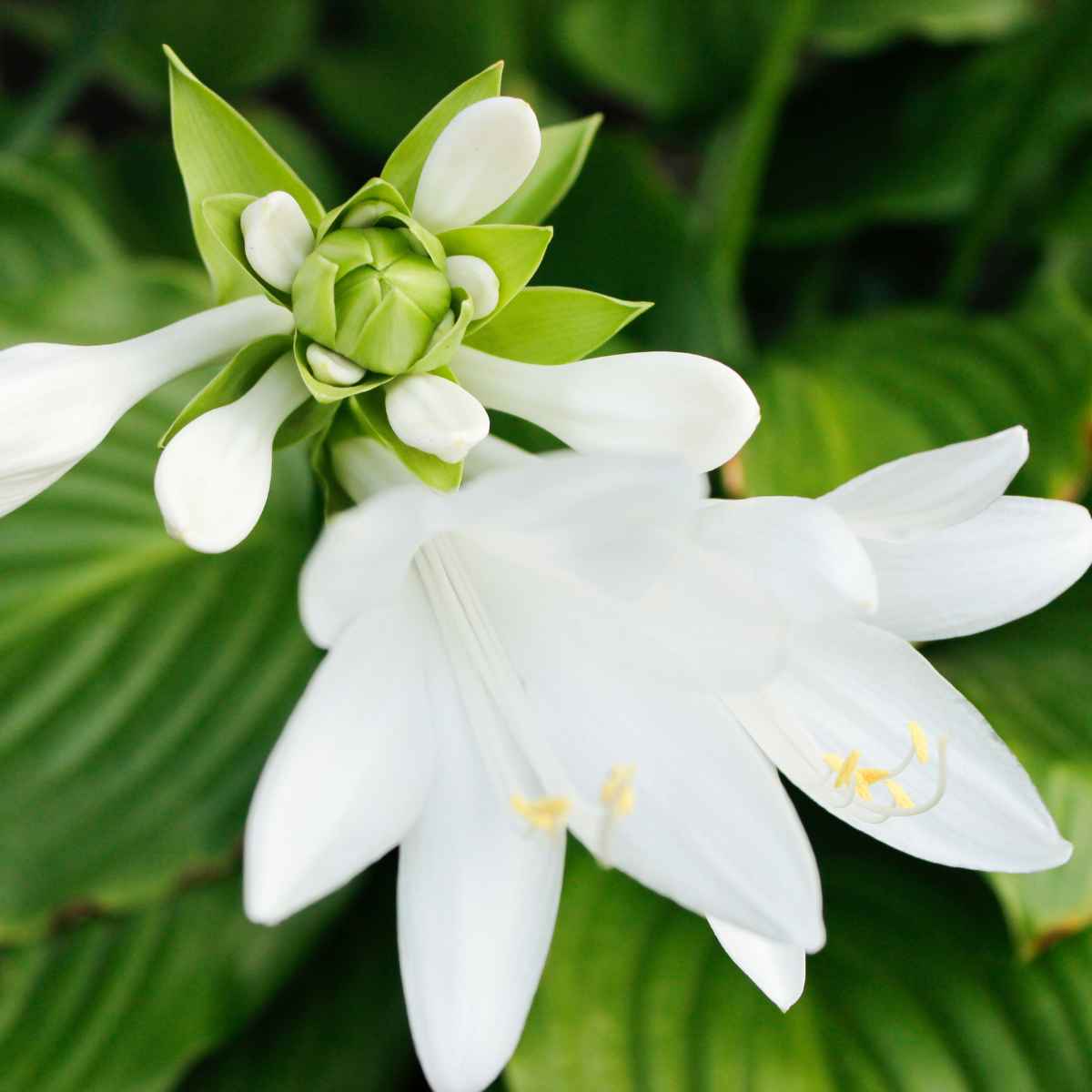
Table of Contents
The Best Sun-Tolerant Hostas with Beautiful Flowers
While most hostas are shade loving plants, there are some full sun hostas. In general, hostas that flower have some sun tolerance as well. Here’s what you need to know before you add sun tolerant hostas with beautiful flowers to your garden.
Hosta plants come in many sizes, shades, and varieties, but blooming hostas with fragrant flowers are a gardener’s favorite. Blooming hostas don’t just add color, they add interest and depth to your landscape for the entire growing season as well.
When cared for properly, blooming hostas provide garden appeal for years to come. Here are some helpful tips on how to care for blooming hostas, so you can enjoy these plants in your own landscaping design!
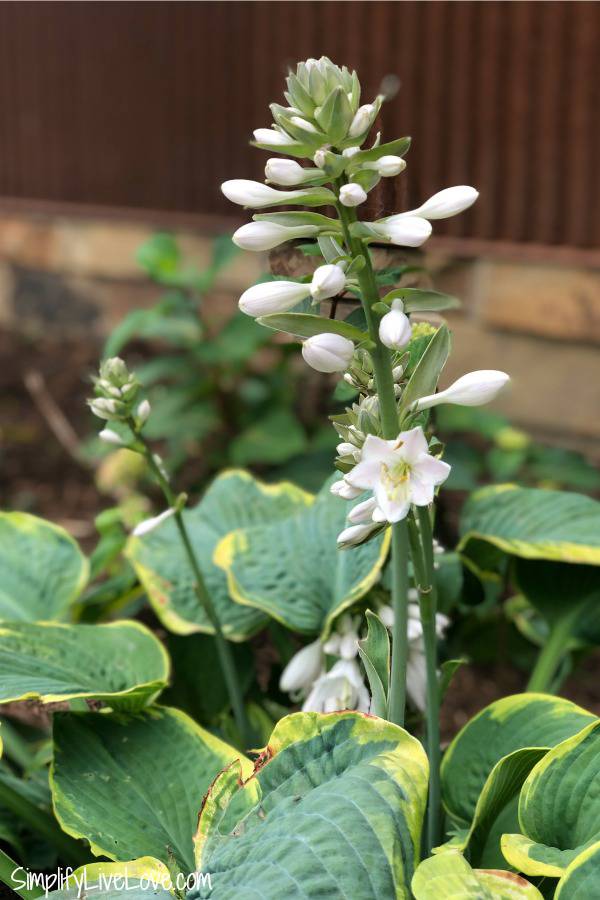
Can Hostas Grow in Full Sun?
Is there such a thing as a full sun hosta? Well, not really. Full-sun hostas won’t do well in spot that gets zero shade. Full-sun hostas are more generally accepted to be sun tolerant, but they really only like about six hours of full sun a day.
A spot that gets morning sun but provides some afternoon shade may be your best bet. You might end up with a little bit of sunburning as you can see in the picture above. You’ll have to experiment to see if your hostas can tolerate full sun, but in general, these are the best sun tolerant hosta varieties:
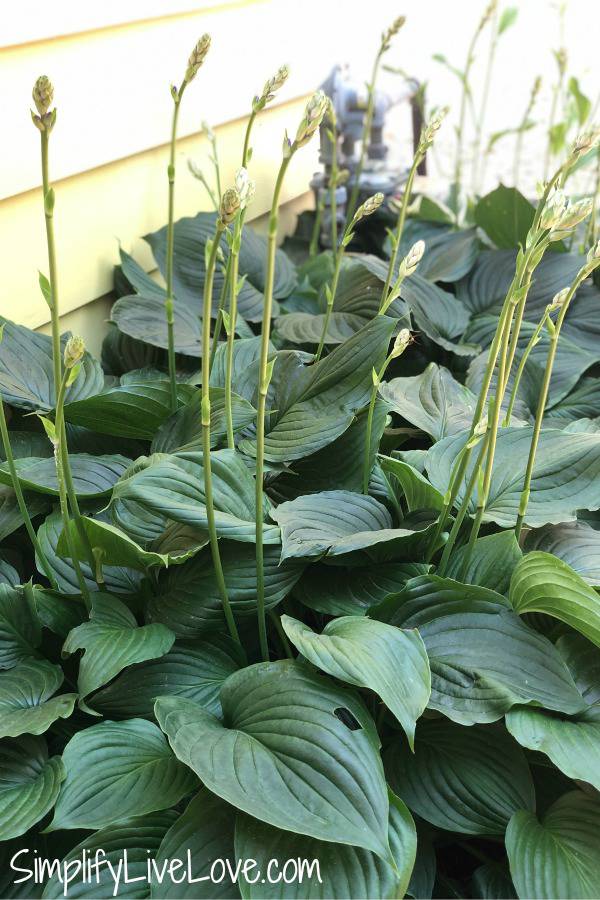
- Rhino Hosta – with extremely thick, cupped, and corrugated chartreuse and blue leaves, the Rhino Hosta is often considered a must have hosta! Bonus points for being slug resistant if slugs are a problem in your area!
- Thunderbolt Hosta – large hostas with extremely wide blue-green and yellow leaves. They’re also slug resistant.
- Liberty Hosta – This giant sun tolerant hosta has leaves with blue-green centers and a neon yellow margin.
- Fried Bananas Hosta – This lovely hosta can tolerate a lot of sun which helps it achieve its bright golden color. They also have lovely, fragrant blooms in the summer.
- Garden Delight Hosta – This hosta is a very common plant in Eastern Iowa and we have several along our barn. They have lovely medium sized green leaves with creamy white margins. Pale lavender flowers appear in August.
- Hosta plantaginea – This hosta has beautiful heart shaped, apple green leaves and some of the most fragrant flowers of all the hostas.
- Sum and Substance – This large hosta variety has bright yellow-green leaves and can tolerate full sun if given enough moisture.
- Sun Power – This sun-tolerant hosta has huge, bright chartreuse-yellow colored leaves. It reaches up to 18 inches in length and 14 inches in width, making it one of the largest hostas available. It produces tall spikes of lavender flowers in late summer that can reach up to 5 feet in height, making it an impressive addition to many gardens.
Lots of people love hosta leaves. But hosta flowers? You either love them or hate them – I know gardeners in both camps. Elephant ear hostas, fire and ice hostas, and guacamole hostas will all provide you with colorful blooms as do many sun-tolerant hostas. It can be hard to know which type of hosta produces which flower because many gardeners cut them off before they bloom!
Pin this now to find it later
Pin It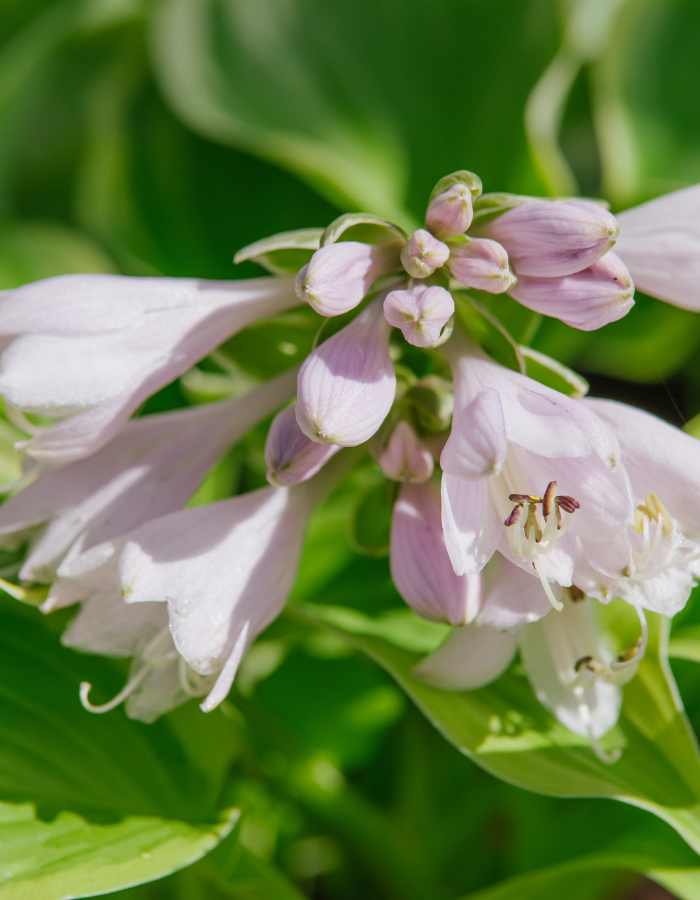
Favorite types of hostas that have beautiful flowers include:
- Elephant ear hostas – These giant hostas are some of my favorites! I typically don’t think of flowers on elephant ear hostas, but they do have pretty white flowers!
- Fire and Ice – The white leaves rimmed with green are also very beautiful garden additions and its purple flowers are stunning!
- Guacamole hostas – These hostas have apple green centers rimmed with dark green and tall white flowers. And the name is just divine!
- Blue Mouse Ears Plantain Lily – these gorgeous miniature hostas have small heart shaped leaves of soft blue-gray with faint white edge in early spring. They also have beautiful purple flowers.
- Gold Regal – This hosta variety is a medium-sized plant that can reach up to 18 inches in height and 30 inches in width. Its leaves are oval-shaped and have a glossy, dark green color with a wide, bright gold margin. The leaves have a slightly rippled edge and are deeply veined. Gold Regal produces lavender flowers on tall stalks in the summer.
- August Moon – August Moon is a large hosta variety that can reach up to 30 inches in height and 60 inches in width. Its leaves are heart-shaped and have a bright gold color that holds up well in full sun. The leaves have a slightly corrugated texture and are deeply veined. August Moon produces lavender flowers on tall stalks in mid-summer.
- Golden Sculpture – This hosta variety is a medium-sized plant that can reach up to 18 inches in height and 30 inches in width. Its leaves are thick and have a bright gold color that holds up well in full sun. The leaves are cupped and have a deeply veined texture. Golden Sculpture produces lavender flowers on tall stalks in mid-summer.
- Fragrant Bouquet – This hosta produces large, fragrant, white flowers in mid-summer.
- Stained Glass – The bright yellow foliage of this hosta is complemented by lavender flowers that bloom in mid-summer.
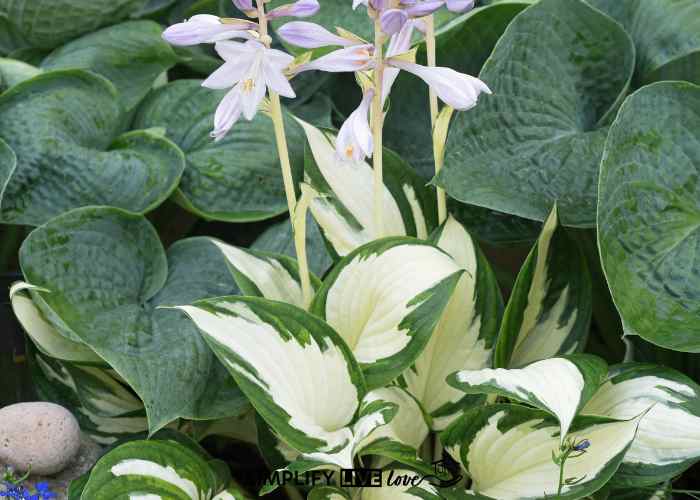
Tips for Sun Tolerant Hostas
1. Provide some shade.
Even hostas that tolerate sun prefer to have a cool down period from the afternoon sun. Plant your blooming hostas where they will get afternoon shade and have the chance to recover from the heat. The blooms will appreciate this as well, and you will experience less browning on the foliage.
2. Keep the water coming.
Watering hostas is super important to their overall health, as these plants require consistent moisture to thrive. In order to create those gorgeous blooms, hostas will need at least 2 inches of water per week. Without adequate moisture, hostas get stressed, develop brown, crispy edges on their leaves, or even die.
The best way to make sure hostas get enough water is to water them deeply and regularly, especially during dry spells or hot weather. Hostas prefer well-draining soil that retains moisture but does not become waterlogged. It’s important to water hostas deeply enough that the water reaches the root system but not so much that the soil becomes saturated.
The best time to water hostas is in the early morning, before the sun becomes too hot and evaporates the water before it can reach the roots. Watering in the evening often creates excess moisture on the foliage, which increases the risk of fungal diseases.
In addition to regular watering, hostas benefit from extra water during particularly dry or hot weather. Consider using a soaker hose or drip irrigation system to deliver water directly to the root zone without wetting the foliage.
Overall, watering hostas is a crucial part of their care routine. By ensuring they receive consistent moisture, you can help these beautiful plants thrive and produce lush foliage year after year.
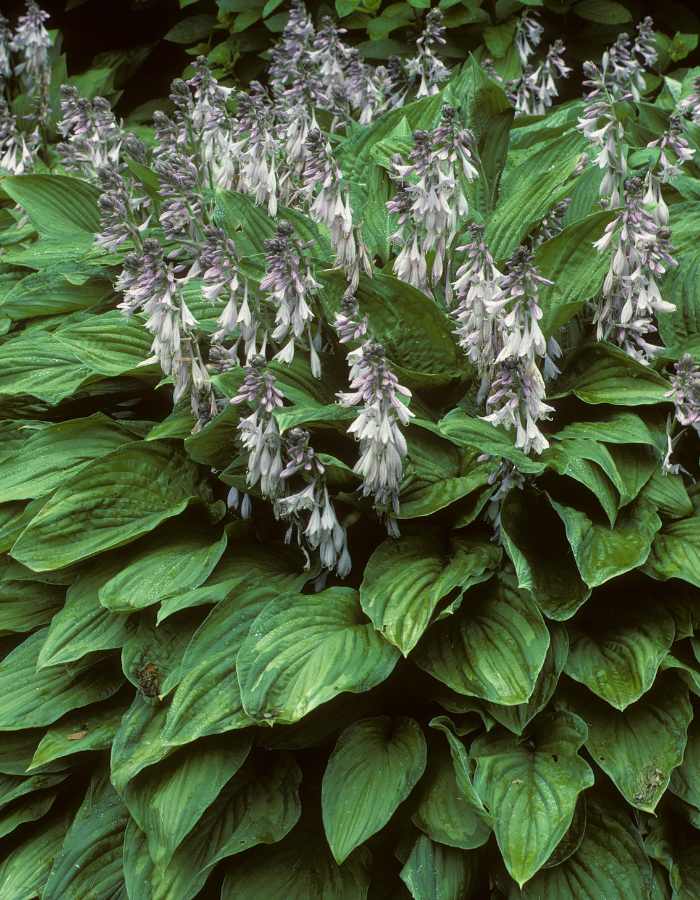
3. Mulch to keep roots cool.
A cool plant is a healthy, blooming plant. Apply mulch around the base of your hostas to help keep moisture in and help keep the roots cool. This will allow the plant to bloom to its max! Reapply mulch as needed throughout the season as rain and wear can cause it to disperse away from the plant base.
4. Dividing hostas.
Hostas grow fast, and this means they can quickly become overcrowded. When this happens the plants can smother each other and growth can become stunted. In order to give them the room they need, divide plants as needed so each original plant is at least 2 feet apart.
To divide sun-tolerant hostas, wait until the plant has finished flowering and the foliage has started to die back in the fall. Carefully dig up the plant and use a sharp knife or shovel to divide the clump into smaller sections. try to take as much of the rootball with you as you can. Replant the sections in a new location and water them well.
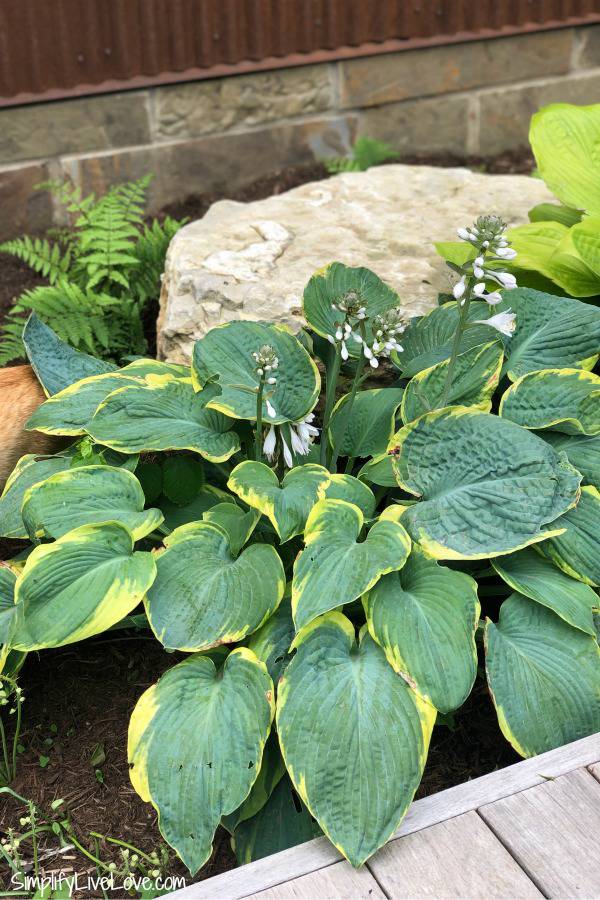
5. Remove spent blooms.
As your blooming hostas start to put on a show, remove dead foliage as you see it. This will help the plant direct the nutrients to where it needs it most. Simply toss the dead foliage into your compost bin when done.
6. Attract pollinators.
Bees, birds, and butterflies will love the blooms on your hostas. By choosing brightly blooming hostas that grow a trumpet shaped bloom, you will attract more of these pollinators. Pollinators spread the plant to other areas of the yard and neighborhood. Pollinators are attracted to purple blooms especially, so guacamole hostas are ideal.
7. Be patient.
Your hostas may not bloom during the first or even second year. If you don’t see blooms right away, don’t panic. As long as it is a blooming hosta, the flowers will show up.
How Much Sun Can Hostas Tolerate?
Sun-tolerant hostas can tolerate more sun exposure than their shade-loving counterparts, but they still need some shade to thrive. They can typically tolerate 4-6 hours of direct sunlight per day, but anything more than that may cause damage to the leaves.
How to Prevent Sun Damage to Sun-Tolerant Hostas?
To prevent sun damage to your sun-tolerant hostas, they’ll need some shade during the hottest part of the day. You can give them shade by planting them under a tree or next to a taller plant. You can also plant them in a location that receives morning sun and afternoon shade.
Should I Fertilize Sun-Tolerant Hostas?
Yes, fertilizing your sun-tolerant hostas can help them grow and produce more vibrant leaves and flowers. Use a balanced fertilizer, such as a 10-10-10 formula, once a month during the growing season.


